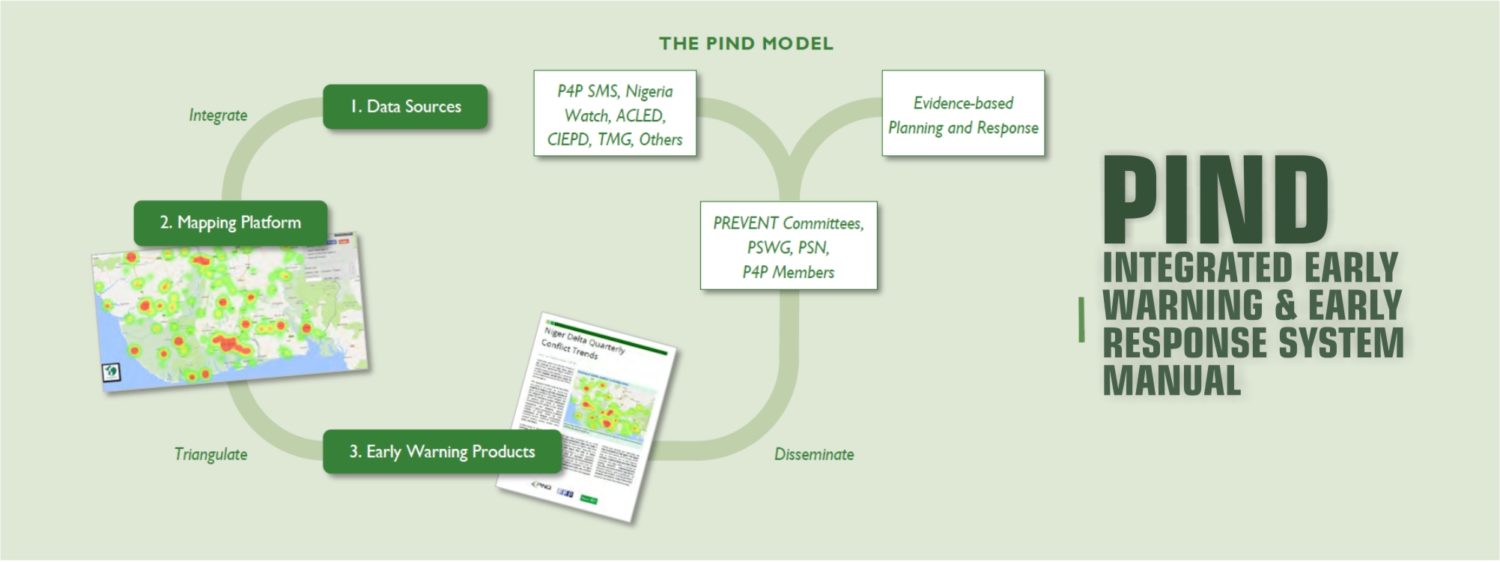
Conflict Early Warning and Early Response (EWER) systems are critical tools in contemporary conflict prevention and peace building. For more than a decade, in the face of increasingly complex conflicts around the world, significant attention and resources have been devoted to the development and operationalisation of such systems. Many contemporary EWER systems are built to address the “if” but fail to answer the “how” and “when.” That is to say, early warning focuses on the collection and dissemination of early warning data and information to stakeholders with the intention of informing decision makers on if an intervention is called for, but the process often fails to include guidance on how (and when) that information should be used for preventive interventions.
The Foundation for Partnership Initiatives in the Niger Delta (PIND) has reimagined what EWER could be and has determined that the measure of effectiveness of their system should not be its ability to predict conflict, but rather its ability to facilitate the prevention of conflict through timely and relevant response. Timely and relevant response, in turn, requires effective linkages between information dissemination and appropriate response mechanisms, but more importantly, it designs early warning products in such a way as to trigger and facilitate response at both the strategic and operational levels, depending on conflict dynamics and the capabilities and mandates of responders. The system also includes a feedback loop whereby results and information from interventions can inform and improve the overall EWER system itself.
This task of designing an effective EWER system is made more challenging by the fact that conflict is systemic, involving social, economic, political, and security dimensions and multiple risk factors. Also, conflict is often expressed at the local, state, national, and transnational levels, and can manifest as communal, political, and criminal violence.
Finally, conflict is not always linear or able to be divided into discrete phases or timelines, nor is it always contained to easily delineate geographical designations. Considering the dynamic nature of conflict, a segmented or inflexible approach cannot effectively address the varied drivers, triggers, vulnerability and risk factors of a particular conflict system. Therefore, effective prevention — as well as proactive conflict management and resolution — must be informed by an equally dynamic and integrated early warning system. Such a system should include government, community, and civil society actors as part of a systematic and multifaceted process of data collection, information sharing and verification. All too often, this is not the case, and key stakeholders who may have both the necessary information and skills to anticipate and respond to a conflict before it escalates into a crisis are left out of the process.
PIND’s EWER system accounts for all of these factors. Download the EWER Handbook now, become a peace agent today.



